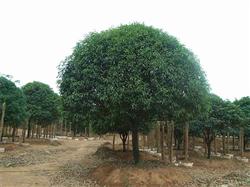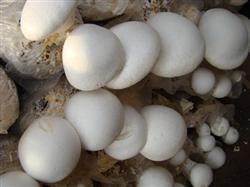How to cultivate Pleurotus eryngii in North China

How to cultivate Pleurotus eryngii in the north? Please guide Pleurotus eryngii, also known as snow mushroom. Pleurotus eryngii is a kind of large fleshy umbrella fungus with good quality. Pleurotus eryngii has thick seedling meat, crisp and tender texture and delicious taste, which can be called the king of Pleurotus ostreatus. Rich in nutrition, high oligosaccharide content, has the effect of bowel cosmetology. Can be suitable for fresh or dried, favored by consumers, good market prospects, its biological characteristics and cultivation techniques are introduced as follows. 1. Biological characteristics: 1. Temperature: temperature is the key to determine the success or failure of cultivation and yield of Pleurotus eryngii. The optimum temperature for mycelial growth was 23-25 ℃, and the optimum temperature for fruiting body growth was 12-18 ℃. The primordia did not appear when the mycelium was below 8 ℃, and deformed mushrooms were easy to occur above 20 ℃. two。 Humidity: the water content of the mycelium growth culture material is 60% mi 65%, the relative humidity of the fruiting body formation stage is 90% mi 95%, and the growth stage is 85% mi 90%. 3. Nutrition: Pleurotus eryngii has strong ability to decompose lignin and cellulose, and needs rich nutrition, especially sufficient nitrogen source, so that the mycelium can grow vigorously and the yield is high. 4. Air: the oxygen demand during the mycelial growth stage is relatively less, the low concentration of carbon dioxide can promote the mycelium growth, the fruiting body growth stage needs sufficient oxygen, and the carbon dioxide concentration should be less than 0.02%. 5. Light: the mycelium growth stage does not need light, which will accelerate the mycelium growth in the dark environment, while the present primordium and fruiting body growth need some scattered light, and the suitable light intensity is 500-100lx. 6.pH value: the optimum pH values of mycelium growth stage and mushroom emergence stage were 6.5-7.5 and 5.5-6.5 respectively. Second, cultivation techniques: 1. Cultivation season: Pleurotus eryngii is a low-temperature strain, which can be cultivated in spring and autumn in the north. two。 Strain production: the mother seed uses PDA medium and the addition of peptone can promote the growth of mycelium. The original seed can be cultured in the medium of wheat grain and sawdust bran. Generally, the original seed can be cultured at 25 ℃ and can grow full in 20-30 days. 3. Raw materials and formula: there are many matrix materials suitable for the growth of Pleurotus eryngii. For example, sawdust, cotton husk, rice straw, wheat straw, bean straw, corn (2339,-5.00,-0.21%) core can be used as cultivation materials. Cultivation material formula: sawdust 34%, corncob 20%, bean straw 20%, wheat bran 20%, corn flour 3%, sugar, calcium carbonate, gypsum 1%, water content 60%, 65%. 4. Bag culture: using 17cm × 33cm low pressure polyethylene plastic (11310,-5.00,0.04%) bag, each bag material dry weight 500g, wet weight 1000g, loading loose and tight moderate, normal pressure sterilization 100℃ for 8-10h, after cooling, inoculation according to aseptic operation. After inoculation, the cells were cultured in shade at 23-25 ℃. The bag can be full in 30-40 days. 5. Management of mushroom production: after the mycelium is full, move the bag into the mushroom room or greenhouse, disinfect the mushroom place carefully, discharge the bag upright, or stack it on the wall. Budding treatment should be carried out before mushroom emergence, strengthen ventilation to enlarge the temperature and humidity difference, stimulate the formation of primordium, open the bag when the mycelium kink to form primordium and the small mushroom bud has appeared, unlock the mouth of the bag, roll the bag film outward and fold it to the material surface 2cm. During the mushroom production period, the temperature of the mushroom shed should be controlled at 13-18 ℃, and the air relative humidity should be maintained at 85% Mel 90%. Do not spray water on the mushroom body, otherwise the fruiting body will turn yellow and affect the quality. 6. Harvesting and processing: generally, it can be harvested in about 15 days of budding, and the harvest period is when the cap is about to spread and the spores have not yet ejected. The harvest standard is determined according to the needs, and the diameter of cap is 4-6cm and the stalk length is 6-8cm for export mushroom. The first tide mushroom can be harvested for about 15 days, and the second tide mushroom can be picked. Products can be sold fresh, resistant to storage, can also be dried or canned. two。 Humidity: the water content of the mycelium growth culture material is 60% mi 65%, the relative humidity of the fruiting body formation stage is 90% mi 95%, and the growth stage is 85% mi 90%. 3. Nutrition: Pleurotus eryngii has strong ability to decompose lignin and cellulose, and needs rich nutrition, especially sufficient nitrogen source, so that the mycelium can grow vigorously and the yield is high. 4. Air: the oxygen demand during the mycelial growth stage is relatively less, the low concentration of carbon dioxide can promote the mycelium growth, the fruiting body growth stage needs sufficient oxygen, and the carbon dioxide concentration should be less than 0.02%. 5. Light: the mycelium growth stage does not need light, which will accelerate the mycelium growth in the dark environment, while the present primordium and fruiting body growth need some scattered light, and the suitable light intensity is 500-100lx. 6.pH value: the optimum pH values of mycelium growth stage and mushroom emergence stage were 6.5-7.5 and 5.5-6.5 respectively. Second, cultivation techniques: 1. Cultivation season: Pleurotus eryngii is a low-temperature strain, which can be cultivated in spring and autumn in the north. two。 Strain production: the mother seed uses PDA medium and the addition of peptone can promote the growth of mycelium. The original seed can be cultured in the medium of wheat grain and sawdust bran. Generally, the original seed can be cultured at 25 ℃ and can grow full in 20-30 days. 3. Raw materials and formula: there are many matrix materials suitable for the growth of Pleurotus eryngii. Such as: sawdust, cotton husk, rice straw, wheat straw, bean straw, corncob and so on can be used as cultivation materials. Cultivation material formula: sawdust 34%, corncob 20%, bean straw 20%, wheat bran 20%, corn flour 3%, sugar, calcium carbonate, gypsum 1%, water content 60%, 65%. 4. Bag-making culture: 17cm × 33cm low-pressure polyethylene plastic bag was used, each bag material dry weight 500g, wet weight 1000g, loading loose and tight moderately, normal pressure sterilization 100℃ for 8-10h, and inoculated according to aseptic operation after cooling. After inoculation, the cells were cultured in shade at 23-25 ℃. The bag can be full in 30-40 days. 5. Management of mushroom production: after the mycelium is full, move the bag into the mushroom room or greenhouse, disinfect the mushroom place carefully, discharge the bag upright, or stack it on the wall. Budding treatment should be carried out before mushroom emergence, strengthen ventilation to enlarge the temperature and humidity difference, stimulate the formation of primordium, open the bag when the mycelium kink to form primordium and the small mushroom bud has appeared, unlock the mouth of the bag, roll the bag film outward and fold it to the material surface 2cm. During the mushroom production period, the temperature of the mushroom shed should be controlled at 13-18 ℃, and the air relative humidity should be maintained at 85% Mel 90%. Do not spray water on the mushroom body, otherwise the fruiting body will turn yellow and affect the quality. 6. Harvesting and processing: generally, it can be harvested in about 15 days of budding, and the harvest period is when the cap is about to spread and the spores have not yet ejected. The harvest standard is determined according to the needs, and the diameter of cap is 4-6cm and the stalk length is 6-8cm for export mushroom. The first tide mushroom can be harvested for about 15 days, and the second tide mushroom can be picked. Products can be sold fresh, resistant to storage, can also be dried or canned. Click to get more cultivation techniques of Pleurotus eryngii
- Prev

What is the value of Osmanthus fragrans?
Consultation content: the planting value of sweet-scented osmanthus trees? Garden use sweet-scented osmanthus evergreen all the year round, luxuriant branches, autumn blossom, fragrance overflowing, can be described as "exclusive three autumn pressure group fragrance". It is widely used in gardens, often as landscape trees, including isolated planting, opposite planting, and forest planting in clumps. In Chinese classical gardens.
- Next

Six characteristics of occurrence of diseases and insect pests in Pleurotus ostreatus
The main results are as follows: 1. most of the pathogens and harmful insects in the culture medium are organic matter. For example, rice straw, cottonseed hulls and livestock feces themselves carry a large number of bacteria spores, bacteria, mites, mosquitoes and flies and other eggs: the medium needs to be sterilized or fermented before use to eliminate or reduce.
Related
- Fuxing push coffee new agricultural production and marketing class: lack of small-scale processing plants
- Jujube rice field leisure farm deep ploughing Yilan for five years to create a space for organic food and play
- Nongyu Farm-A trial of organic papaya for brave women with advanced technology
- Four points for attention in the prevention and control of diseases and insect pests of edible fungi
- How to add nutrient solution to Edible Fungi
- Is there any good way to control edible fungus mites?
- Open Inoculation Technology of Edible Fungi
- Is there any clever way to use fertilizer for edible fungus in winter?
- What agents are used to kill the pathogens of edible fungi in the mushroom shed?
- Rapid drying of Edible Fungi

